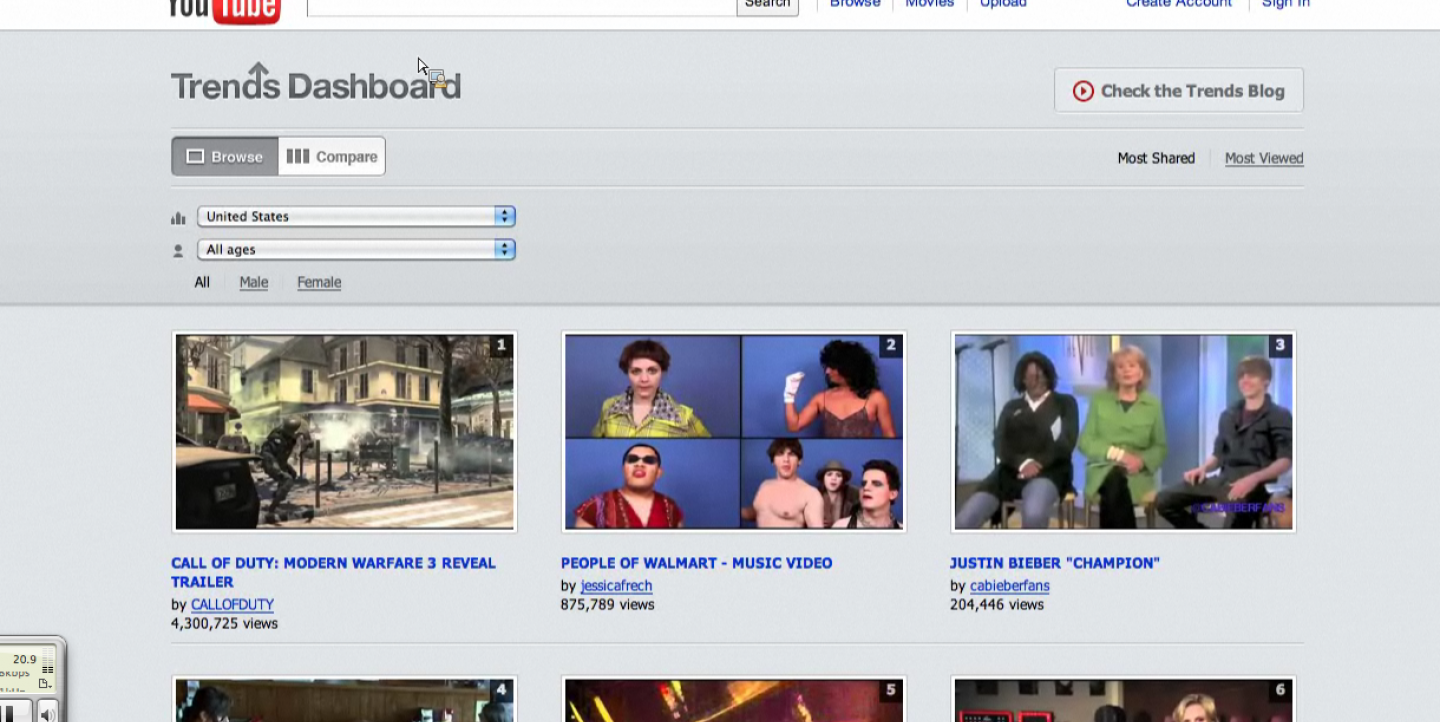Every minute, 35 hours of video are uploaded to YouTube, aided by widespread use of smart phones. Anyone can upload videos on the Internet, some of which are newsworthy, while others can be a complete waste of time.
From videos about the volcano in Iceland to a Christmas without snow in Florida, how can a journalist in a newsroom find what is hot, viral, and/or time-sensitive?
Here are six best practices on how to use YouTube’s video service in newsrooms and a couple of pointers to keep in mind while browsing play-lists.
IJNet gathered these tips from a webinar for journalists about “Finding Newsworthy Video Online”, organized by Radio Television Digital News Association RTDNA and hosted by Kevin Allocca, YouTube Trends manager. (You can catch more opportunities like this one in our free weekly newsletter).
1- To find ‘the biggest video of the day,’ start by looking at Youtube charts, where you can browse the most-viewed videos for a particular day, week or month in a particular region. Adjust your search according to your audience’s interests. What is viral in one region might not be in another.
2- Citizentube is a "breaking news kind of destination." Curated in partnership with Storyful, Citizentube is chock full of major global events. For example, you can find a playlist of uploaded videos every day during the January 2011 Egypt revolution and follow the progression of the videos posted each day.
3- Use the search feature. It seems obvious but it is a "must use." The key? Filter, filter, filter by city or country. While filtering, use keywords. In a breaking news situation, “search is still the most efficient way,” Allocca adds, for quickly finding clips on a certain topic.
4- Youtubetrends focuses on aggregating all that's interesting and viral in one location. It helps surface videos being picked up by blogs or being widely shared. Twice a day Allocca uploads the four different videos that have received the most buzz or sparked discussio on that particular day. Use Trends for wrap-up pieces (ex. watch the top nine YouTube Videos of the week), story ideas, or for supporting data (as good supplementary material; footage from different citizens in the area).
You can also sign up for the recently-launched Trends newsletter to get daily emails to your inbox – a service still limited to a small group of journalists.
5- TrendsDashboard. Accessible from the Trends site, it offers the most shared videos in a certain country. You can compare what is popular in the U.S. to what's hot in Russia and Mexico, for example. It also gives the audience’s gender and age.
6- Youtube for Media: is a hub for information about issues of concern when re-broadcasting. You can find information about how to find videos in higher resolution and how to credit content to the creator and YouTube when rebroadcasting.
One thing to keep in mind: YouTube staff “are not journalists. Our mission is to organize the videos that people are looking for," Allocca says. This means that it is still up to journalists to verify content. To verify the provenance of the video, start by contacting the person who uploaded the video by sending a message through their YouTube channel.

